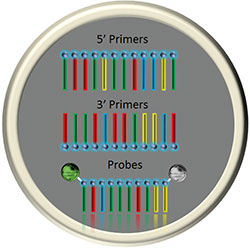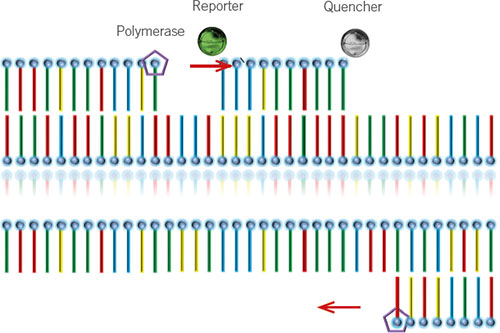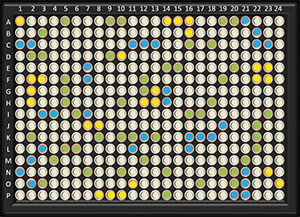
Product features

Primers and Probes
Each well of the QTYPE plate contains prealiquoted dried primers as well as a dual-labelled hydrolysis probe designed to bind to a location between the primers. The hydrolysis probes include a fluorescent reporter dye at one endand a quencher molecule at the opposite end.
PCR Amplification
Each primer pair binds to a specific subset of alleles. The hydrolysis probes bind to the target DNA in the same manner as the primers. During the PCR annealing step, the polymerase incorporate nucleotides onto the 3’ end of the primers. When the polymerase reaches a probe that is bound to the same strand of DNA, its nuclease activity will digest the probe, releasing the reporter molecule and quencher. This allows the freed reporter molecule to fluoresce.

Real time fluorescence
At the end of each extension step, the Real Time PCR instrument will illuminate the reaction. The level of fluorescence is directly related to the amount of PCR product, allowing the amplification to be monitored in Real Time. We can detect the point at which true exponential amplification occurs as well as how much probe has bound to the sequence. Each of these values is used to determine whether a reaction is positive or negative.

 Multiplexing
Multiplexing
QTYPE products use up to four separate detection channels per well. One of these is reserved for an internal amplification control, designed to amplify a conserved region of the human genome, and used to ensure that DNA was added to each well. Currently, two channels are used for HLA-specific reactions.
